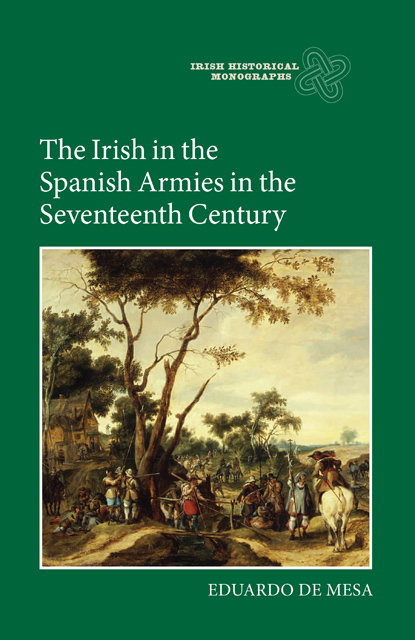6 - The Long Journey of Tyrconnell’s Tercio, 1639–44
Published online by Cambridge University Press: 23 February 2023
Summary
The war in Rosellón and the siege of Salses
In July 1639 the sergeant major of Tyrconnell’s Tercio, Nelan O’Boyle, received orders to incorporate the unit into the division of the Army of Cantabria, which was going to be deployed in Spanish Rosellón. The Tercio received twenty-two muskets, thirty-seven arquebuses and forty pikes and was made ready for action. The French had invaded the region earlier in June and were besieging Perpiñán and Salses, the key strategic fortress of Rosellón. The soldiers behaved badly on the way to the battlefront, as they plundered the towns of Navarra through which they passed. Local authorities denounced the soldiers’ extortions, robberies and rapes. In the meantime, Salses fell on 19 July, after forty days of siege.
In the following month the count of Santa Coloma, viceroy of Catalonia, decided to counter-attack the French with the Army of Catalonia. However, the high command differed in opinion. The count of Tyrconnell, who had arrived directly at Rosellón from Madrid, preferred to wait for the arrival of the division of the Army of Cantabria, as the enemy was stronger in infantry and cavalry. The army corps was still advancing towards the battlefront. In Tyrconnell’s opinion, the Spanish forces that had arrived directly from Catalonia could wait in Perpiñán and, when joined together, could force a French withdrawal.
Before the reunion of the Army of Catalonia (commanded by Santa Coloma) and that of Cantabria (under the command of the marquis of los Balbases), the latter’s forces were mustered in Perpiñán. They consisted of 958 officers and 6,758 soldiers of infantry. Among them were Tyrconnell’s Irishmen: seventy-five officers and 478 soldiers, 553 men in total. Days after the reunion of both army corps, in a council of war held by the commanders, it was decided to muster the combined army in frente de banderas (a formation which mustered all the army, company per company, in a line) in front of Perpiñán. They wanted to impress the French with their strength. On 20 September the Spanish besieged Salses. The combined army was formed by 25,800 infantrymen in twenty-five Tercios and four thousand horsemen. On paper, around twelve thousand infantrymen were Catalans and there were only six hundred Irish.
- Type
- Chapter
- Information
- The Irish in the Spanish Armies in the Seventeenth Century , pp. 165 - 192Publisher: Boydell & BrewerPrint publication year: 2014



